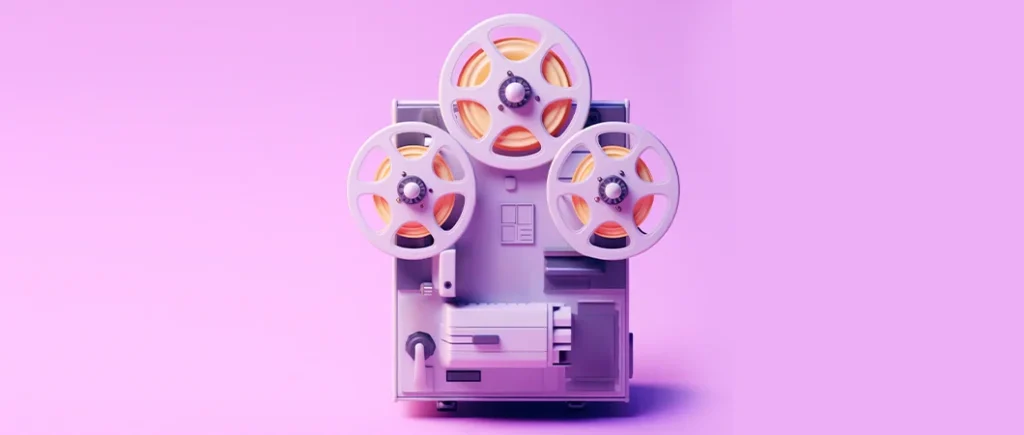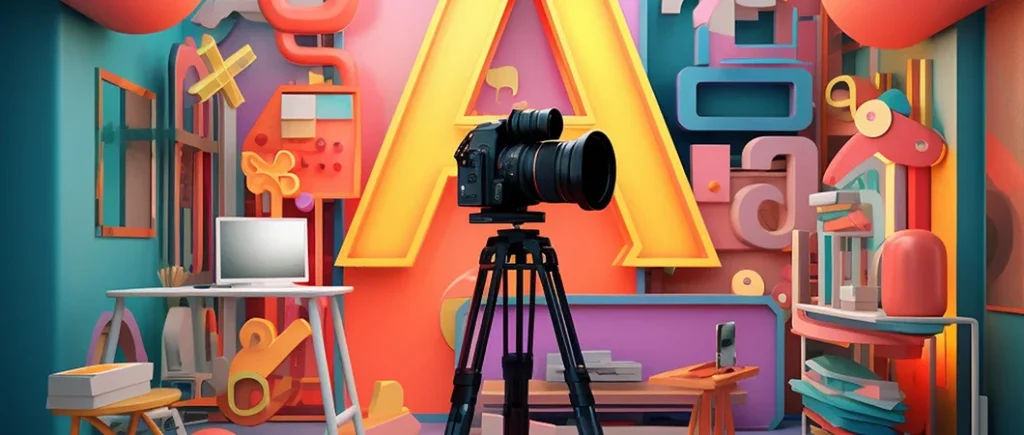
Using Animation in E-learning
December 16, 2023
Medical Animation: Everything You Should Know
January 6, 20243D Animation Pipeline: A Step-by-Step Guide
The 3D animation pipeline is the workflow that animators follow for making 3D animations. How to make 3D animation is a complex process that involves comprehensive cooperation across many specialists in different fields. To ensure that every team member cooperates correctly during the production, animation studios plan the process by using a 3D animation pipeline.
3D animation is creating moving images in a three-dimensional space using computer software. It has many applications for various purposes, such as entertainment, education, and advertising.
Table of Contents
What is a 3D Animation Pipeline?
The 3D animation pipeline is the sequence of stages that a production project goes through, from the initial idea to the final output.
The 3D pipeline is like a roadmap that manages and modifies the artist’s and producer’s single tasks from the idea to the final rendering. This roadmap is there to make sure every part of the team works on scheduled tasks in the scheduled timeline.
The 3D animation pipeline is not a rigid or linear process. It is often iterative, collaborative, and flexible. It allows animators can go back and forth between different stages.
3D Animation Pipeline Phases
The phases depend on the scope, complexity, and style of the project, but it generally consists of 3 main phases:
- Pre-production
- Production
- Post-production
Each phase has several sub-stages that require different skills, tools, and techniques.
The 3D animation pipeline is creative and dynamic, and the animators can experiment with different ideas, methods, and solutions to achieve the best results.
Why Using the Pipeline to Make 3D Animation is Necessary?
A pipeline is a system that defines the sequence of stages, tasks, and roles involved in the process of 3D animation creation.
It is necessary for the animation production process because it helps to manage budget and complex projects, maintain consistency, and meet deadlines.

Steps of the 3D Animation Production Pipeline
The following are the typical steps of the 3D animation production process, along with some examples and tips for each stage.
Pre-production
It is the first and most important phase of the 3D animation pipeline. Whether you plan to create 3D animation with AI or manually, pre-production is what you need for a successful animated product.
The pre-production stage includes cooperating two teams for research, designing, planning, and managing the production process. Every team has its responsibilities and is dedicated to specific tasks. The design team defines the concept, story, and style of the project. Simultaneously, the management team plans the whole operation and estimates the budgeting and resources needed for product production.
The main stages of pre-production are:
1. Concept Development & Ideal Generation
It is a stage in the 3D animation pipeline where the animators come up with the main idea and vision for the animation project. They may get inspiration from various sources, such as books, movies, games, artworks, or real-life events.
During the concept development for an animated product, the production team may consult with their clients or stakeholders to understand their goals, expectations, and preferences.
Concept development also involves creating a treatment document. This document is a more detailed outline of the 3D animation projects that expand on the pitch document. The treatment document includes the main characters, settings, plot, and scenes of the 3D animation project. Also, this document has some sketches, references, and mood boards that illustrate its visual style and atmosphere.
2. Scriptwriting
It is the formal written version of what happens in the animated product and contains the time, environment, dialogue, narration, and action of the characters and scenes.
The script is based on the treatment document and follows the structure, format, and conventions of the chosen genre and medium of the animation project.
It requires a lot of creativity, imagination, and storytelling skills. The script should be clear, concise, and engaging, as well as consistent with the tone and message of the 3D animation project. It is an important stage of production due to the reliability of the next step, which is storyboarding.
3. Storyboarding
It is the stage where the animators create the storyboard, which is a visual representation. It shows the sequence and layout of the scenes and shots. The storyboard is based on the script and consists of a series of sketches or drawings that depict the main actions, movements, expressions, and scenes.
Storyboarding helps the animators visualize and plan the animation project, as well as identify and solve any potential problems or issues. It also serves as a communication tool between the animators, directors, producers, editors, sound designers, and voice actors.
4. Character Design
Character design is one of the important stages in the 3D animation pipeline. During this stage, the production team produces the character designs, which are detailed descriptions and illustrations of the characters. The character designs are based on the script and the storyboard and include the physical appearance, personality, background, and role of the characters.
Designing the characters should be original and consistent with the genre, style, and message of the project.
5. Environment and Background Design
Environment and background design is the stage where the animators create the environment and background designs. In this stage, animators create detailed illustrations of the settings and locations that appear in the animated product.
6. Animatic
Animatic or storyboard’s moving form is another important stage of a 3D animation pipeline. Animators create the animatic by combining the storyboard, the script, and some basic sound effects and music.
This moving format of storyboard is created using 3D animation software. It is for testing and evaluating the timing, pacing, and flow of types of 3D animation.

Production
It is the second and most time-consuming phase of the 3D animation production process. Production is where the animators create the initial version with the results and outcomes of the pre-production phase. In other words, this is where the animation comes to life!
The main stages of production are:
1. Layout
Layout is a fundamental stage for the production of 3D animated products, as it sets the foundation and the framework for the project. It also sets the direction and the movement of the characters and objects.
It defines the position, size, and orientation of the characters and objects in each scene. The layout is based on the storyboard and the animatic. Producers create layouts to model, rig, and animate the characters and objects in a 3D space.
2. Character Animation
Character animation is the stage in the 3D animation pipeline that brings the characters to life by making them move, speak, and express emotions in a realistic or stylized way.
Character animation is a challenging and complex stage, as it requires a lot of observation, imagination, and experimentation. It needs a good understanding of the anatomy, physics, and psychology of the characters.
3. Special Effects
Special effects are the visual or auditory enhancements that transform animation into a captivating spectacle. They breathe life into characters, create immersive environments, and elevate the overall storytelling experience. They include elements such as lighting, shadows, reflections, textures, colors, particles, fluids, fire, smoke, explosions, and sound effects.
From realistic lighting and textures to fantastical explosions and sound effects, special effects transform a simple animation into a cinematic masterpiece. They do the magic by adding a sense of realism, drama, or fantasy to the animation.
4. Clean-Up
It is the process of polishing and refining by removing any errors, glitches, or inconsistencies that may have occurred during the previous stages. Clean-up ensures the smoothness, accuracy, and professionalism of the 3D animated product.
Clean-up is a crucial stage in the 3D animation pipeline and involves checking and correcting the product for any issues such as continuity, quality, performance, and compatibility.
During this stage, you should edit, modify, and optimize the animation to produce the final results for the next step, which is post-production.

Post-Production
Creating a video is only half the battle. The final magic happens in post-production, where expert editing, enhancing, and exporting take place to make the 3D animated product look stunning.
Post-production is the third and final phase of the 3D animation pipeline. During this phase of the pipeline, the production team finalizes and delivers the animation.
This stage includes adding the finishing touches and preparing it for publishing.
With this crucial step, your 3D animation will become a professional and polished masterpiece that is sure to leave a lasting impression on your audience.
The main stages of post-production are:
1. Compositing
It is the process of combining the different elements and layers into a single image or video.
The compositing involves merging the 3D animation, the special effects, the environment and background, and any other digital elements or effects. You should use professional compositing software for adjusting the opacity, color, contrast, and other properties of the elements and layers. you
2. 2D VFX
2D VFX is among the final stages of animation production that focuses on adding visual effects like camera shakes, raindrops, sparks, and dust to the animation. These effects are often created in a 2D environment and combined with other layers during compositing to improve the overall quality and depth of the animation.
3. Sound Design
It is the process of creating and adding sound elements to the project. You should record, edit, mix, and synchronize sound elements such as dialogue, narration, music, and sound effects with the animation.
4. Color Correction
Color correction, often referred to as color grading or color timing, is the final stage in the animation process that brings visual cohesion and polish to the entire project.
During color grading, you must carefully adjust the color palette and lighting to ensure that every frame and shot seamlessly blend, creating a unified visual style that enhances the storytelling and emotional impact of the animation.
The color correction process involves a meticulous balancing of various elements, including:
- Color Temperature
- Saturation
- Contrast
- Color Balance
- Color Correction Curves
5. Final Output
During this process of 3D animation production, the animators provide the final version of the animation that is ready for publishing.
The output involves exporting the 3D animation product to the desired format, resolution, and quality.
We Turn Your Vision into Reality at Motion and Potion Studio
If you are looking for a professional and the best 3D animation studio in Turkey to help you with your projects, look no further than Motion and Potion.
At Motion and Potion Studio, we have a team of talented 3D animators who can create stunning 3D animations for any genre, style, and purpose, tailored to your needs.

